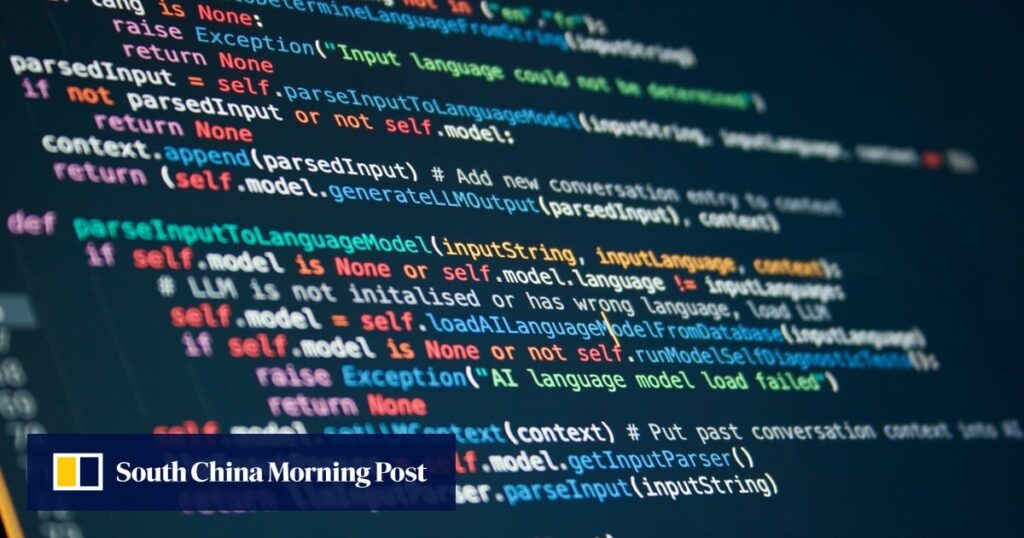In the competitive landscape of artificial intelligence, coding agents have emerged as a pivotal arena, signaling significant advancements in both capabilities and application. The recent launch of the GLM-4.6 model by the Chinese unicorn Z.ai (formerly known as Zhipu) highlights not only the rapid progression of AI technology but also the increasing rivalry among both domestic and international players. The capabilities of AI models in coding are seen as essential—not merely to enhance programming efficiency but as an integral step toward achieving artificial general intelligence (AGI).
Z.ai claims that the GLM-4.6 showcases competitive advantages over models such as Anthropic’s Claude Sonnet 4, released only days apart. This indicates a broader trend where coding models are becoming benchmarks for the industry, positioning companies such as Z.ai and Anthropic at the forefront of innovation. Notably, self-reported benchmarks indicate that GLM-4.6 demonstrates substantial improvements in coding, reasoning, and agentic capabilities over its predecessor, GLM-4.5. However, despite these strides, GLM-4.6 does not yet surpass Claude Sonnet 4.5, which Anthropic touts as the “best coding model in the world,” particularly regarding coding efficacy.
An analytical evaluation of both the GLM-4.6 and Claude Sonnet 4 highlights several factors relevant to small and medium-sized business (SMB) leaders and automation specialists. First, the adaptability and robustness of a coding model significantly impact its scalability. GLM-4.6 showcases positional advantages, particularly in industries sensitive to localization needs, potentially offering tailored solutions that resonate with specific market demands. Conversely, the entrenched position of Anthropic, with established methodologies and an expansive dataset, may contribute to greater reliability and performance across varied applications.
When considering the dimensions of cost and return on investment (ROI), it is vital to delve into the pricing models that underpin these AI solutions. For SMBs, budget constraints often dictate the viability of adopting sophisticated tools like GLM-4.6 or Claude Sonnet 4. If Z.ai can provide a more cost-effective solution without significant trade-offs in capabilities, it may position itself as a preferable partner for businesses seeking to leverage AI solutions while optimizing their investment. In addressing the balance of upfront costs against long-term returns, organizations must consider not only the initial licensing fees but also the potential labor savings and efficiency gains that come with effective AI deployment.
Moreover, the efficiency of these platforms in integrating with existing workflow systems cannot be overlooked. For example, platforms such as Make and Zapier provide robust automation capabilities, but their efficiency varies depending on the complexity of tasks and the ecosystems they operate within. If Z.ai’s GLM-4.6 can demonstrate seamless integration in varied environments, it could become an attractive alternative to competitors like Anthropic that may have larger ecosystems at their disposal but are more rigid or costlier to implement.
As researchers and industry experts probe deeper into the coding capabilities of these latest models, the implications for businesses are profound. Coding models can enhance operational efficiency, significantly reduce the burden on human programmers, and allow companies to redirect labor toward higher-value tasks. However, the technology is not without limitations. Challenges remain in ensuring model outputs are free from biases or inaccuracies, especially in complex coding scenarios where nuanced problem solving is essential.
The landscape is further complicated by emerging players in the Chinese AI market, such as DeepSeek, Alibaba Cloud, and Moonshot AI. Each is investing significantly in the development of competitive coding AI. As competition intensifies, businesses will not only benefit from better pricing structures but may also see enhanced capabilities driven by a race for leadership in AI superiority.
In summary, companies evaluating their options between GLM-4.6 and Claude Sonnet 4, as well as other emerging platforms, must take a comprehensive approach. Understanding the trade-offs between performance, cost, integration capabilities, and scalability will be critical. As these technology solutions continue to mature, a strategic alignment of business goals with the most suitable AI tool can yield significant operational efficiencies and support a pathway towards achieving a competitive edge.
FlowMind AI Insight: As AI models like GLM-4.6 and Claude Sonnet 4 evolve, the potential for SMBs to harness these advanced technologies is expansive. A thorough evaluation of both capabilities and compatibility with existing systems will be paramount for organizations aiming to optimize efficiency and drive innovation in their sectors. Investing in the right AI solution today could pave the way for greater long-term success tomorrow.
Original article: Read here
2025-10-01 10:00:00

